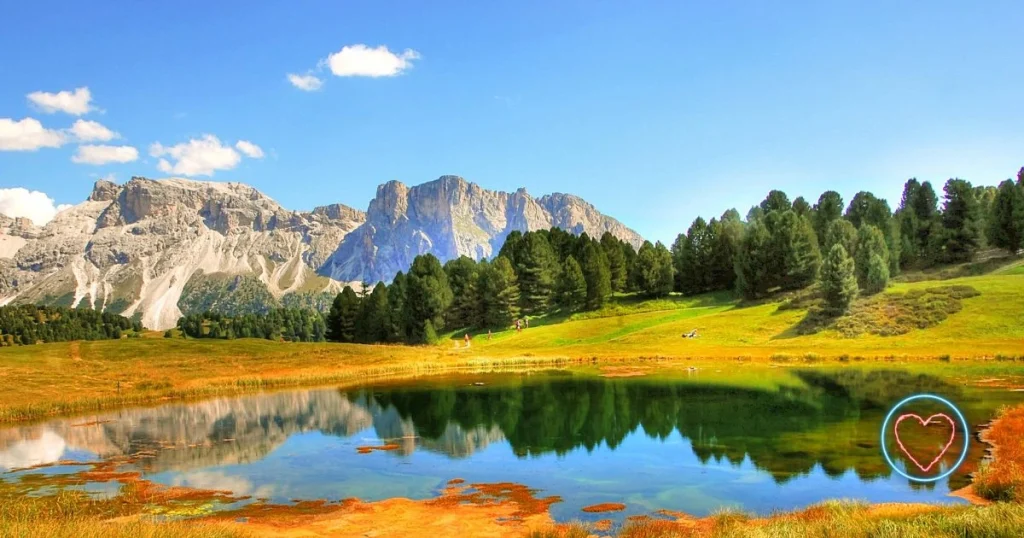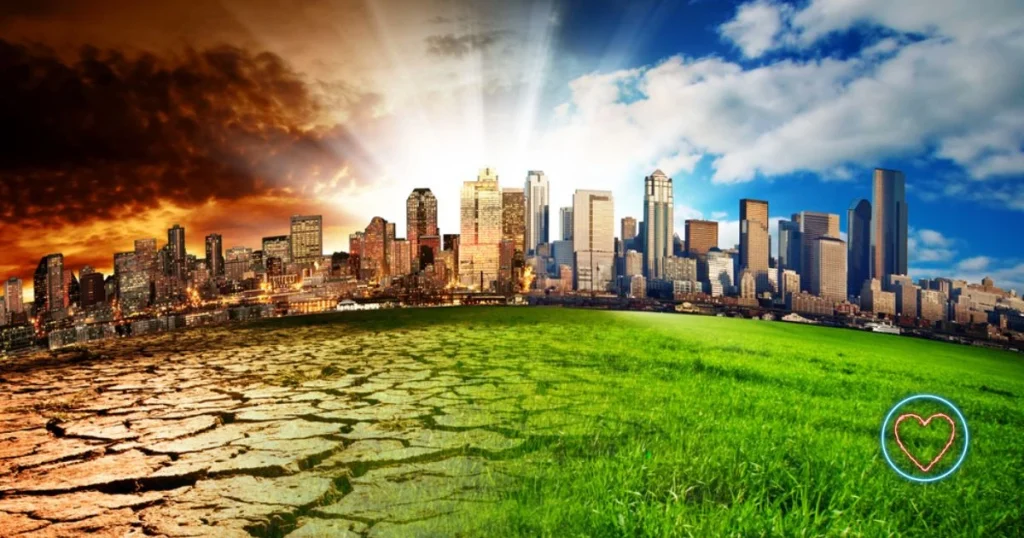Nature isn’t merely a backdrop to human life—it is the very foundation of our existence. From the towering mountains to the tiniest leaf, nature encompasses a world of wonder, balance, and interconnectedness. However, in the modern rush of urban living and digital distractions, many of us have grown increasingly detached from this essential force.
To reconnect with nature is to remember where we come from. It is to rediscover beauty in simplicity, meaning in silence, and life in its purest form. In this article, we will explore the beauty of nature, its role in healing and sustaining life, and how fostering a deeper relationship with the natural world can profoundly transform our lives.
The Living Canvas: Nature’s Enduring Beauty
All around us, nature displays its quiet yet majestic artistry. A single tree can be a sculpture of symmetry and growth. The shifting colors of autumn leaves create a visual symphony. Even the patterns in a seashell or the geometry of a sunflower exhibit astonishing perfection. These aren’t coincidences—they are nature’s unfiltered creativity.
More than just aesthetics, these natural displays affect our mental well-being. According to researchers, exposure to natural beauty can increase feelings of happiness, reduce mental fatigue, and enhance creativity. For instance, watching a sunset has been shown to evoke awe, a powerful emotion that can lead to increased generosity and humility.
Unlike artificial beauty, nature’s elegance is ever-changing and infinite. A single walk in the same forest reveals new colors, smells, and sounds each time. Consequently, it keeps us grounded in the present, offering a gentle reminder that there is beauty in impermanence.
Healing in the Green: Nature’s Therapeutic Power
Beyond its visual splendor, nature is a potent healer. Numerous studies have confirmed that even short periods spent in natural environments can significantly reduce stress and anxiety.
Firstly, green spaces lower cortisol levels—the hormone associated with stress. Simply walking through a park can soothe the nervous system. Secondly, being in nature encourages physical activity, which contributes to both physical and mental health. Lastly, natural settings often foster mindfulness, helping us tune into our surroundings and silence mental clutter.
For example, the Japanese practice of Shinrin-yoku, or forest bathing, involves immersing oneself in a forest environment for the purpose of relaxation and rejuvenation. Participants often report lower blood pressure, improved mood, and greater clarity of thought.
Moreover, hospital patients who have views of nature tend to recover faster and require fewer pain medications. This suggests that our bodies inherently respond to natural stimuli in healing ways, even when exposure is passive.
The Silent Sustainer: Nature’s Role in Life Systems
While nature soothes the mind and uplifts the spirit, it also performs critical functions that sustain life on Earth. Often invisible and underappreciated, these systems work tirelessly to keep the planet habitable.
To begin with, forests act as the planet’s lungs. Through photosynthesis, they absorb carbon dioxide and release oxygen—making them indispensable in combating climate change. In addition, wetlands filter water, preventing pollution from reaching lakes and rivers.
Equally important, biodiversity ensures food security. Pollinators like bees and butterflies are responsible for fertilizing nearly 75% of the crops we consume. If these species decline, so does our global food supply.
Furthermore, oceans serve as the Earth’s thermostat, regulating climate by absorbing vast amounts of heat and carbon dioxide. Coral reefs, although covering less than 1% of the ocean floor, support about 25% of all marine life.
Thus, nature’s value extends far beyond scenic landscapes. It is a complex and self-sustaining web that directly affects every breath we take, every bite we eat, and every drop of water we drink.
The Disconnection Crisis: Losing Touch With the Natural World
Despite these vital roles, modern society often overlooks nature’s importance. Urban expansion, industrialization, and increasing screen time have created a chasm between humans and the natural world.
Today, more than half of the global population lives in cities. Children, in particular, are growing up with limited access to outdoor play. This disconnection, often referred to as “nature deficit disorder,” is associated with increased rates of depression, attention issues, and obesity.
Digital devices may offer constant entertainment, but they rarely provide the psychological nourishment that comes from real-world exploration. Instead of hearing birdsong, we hear traffic. Instead of feeling wind on our skin, we feel air-conditioning.
Ultimately, when people don’t experience nature, they stop valuing it. And when they stop valuing it, conservation efforts suffer. The first step in solving this crisis is to recognize it and actively seek ways to restore our relationship with the Earth.
Nature as a Mentor: Lessons From the Wild
Nature is not only a healer and sustainer but also a wise and patient teacher. Observing natural processes can reveal profound truths about life, growth, and resilience.
Consider the seasons. Spring, summer, autumn, and winter each have distinct roles, none more important than the others. This teaches us the value of cycles and the need for rest as much as for productivity.
Similarly, rivers demonstrate adaptability. They don’t resist obstacles; they flow around them. This illustrates the power of persistence and the importance of flexibility in overcoming challenges.
Moreover, ecosystems show us the necessity of balance. Predators and prey, growth and decay, life and death—all play a part in maintaining equilibrium. In a world obsessed with constant growth, nature reminds us that sustainability requires limitation.
By looking closely, we learn that survival isn’t just about strength—it’s about cooperation, adaptation, and respect for every element in the system.
The Call to Protect: Why Conservation Matters
Given nature’s undeniable value, it becomes our responsibility to protect it. Unfortunately, environmental degradation is accelerating. Deforestation, pollution, climate change, and species extinction are no longer distant threats—they are current realities.
The good news is that solutions exist, and every individual has a role to play. For example:
- Reduce consumption: Opt for sustainable products and minimize waste.
- Support clean energy: Transitioning to solar, wind, and other renewable sources helps reduce fossil fuel reliance.
- Plant trees: Reforestation not only absorbs carbon but also restores habitats.
- Educate others: Raising awareness can create ripple effects within communities.
- Vote for policies that prioritize the planet: Policy change is one of the most effective tools for large-scale environmental impact.
By making environmentally conscious choices, we not only protect nature—we protect ourselves and future generations.
Small Steps Toward Reconnection
Rebuilding our connection with nature doesn’t require drastic life changes. Often, small shifts can reignite our sense of wonder and appreciation.
For instance, start your day with a short walk in the park. Observe the details—a bird building a nest, dew on a blade of grass, clouds shifting across the sky. Alternatively, try planting a small garden, even if it’s just herbs on a windowsill. The act of nurturing a living thing fosters awareness and patience.
Camping trips, beach outings, or mountain hikes are wonderful when possible. However, even urban environments contain pockets of nature—trees along sidewalks, community gardens, or rooftop green spaces.
Furthermore, engage in nature journaling. Writing down your observations strengthens your bond with the world around you. Through this simple practice, you begin to notice the extraordinary in the ordinary.
Conclusion: Coming Home to Nature
Nature is not something outside of us—it is part of us. Our bodies are made of the same elements that form rivers, trees, and stars. In remembering this connection, we rediscover our place in the universe.
As we face growing environmental challenges, it’s vital that we rekindle our relationship with the Earth—not out of obligation, but out of love and reverence. The more time we spend in nature, the more we understand its language. We begin to hear the wind not just as noise, but as a whisper. We see the sky not just as background, but as canvas.
In the end, protecting nature means protecting the sacred bond we share with all life. It means preserving beauty, ensuring survival, and restoring balance.
Let us not forget: nature was our first home. And it can still be our sanctuary—if we choose to return.


